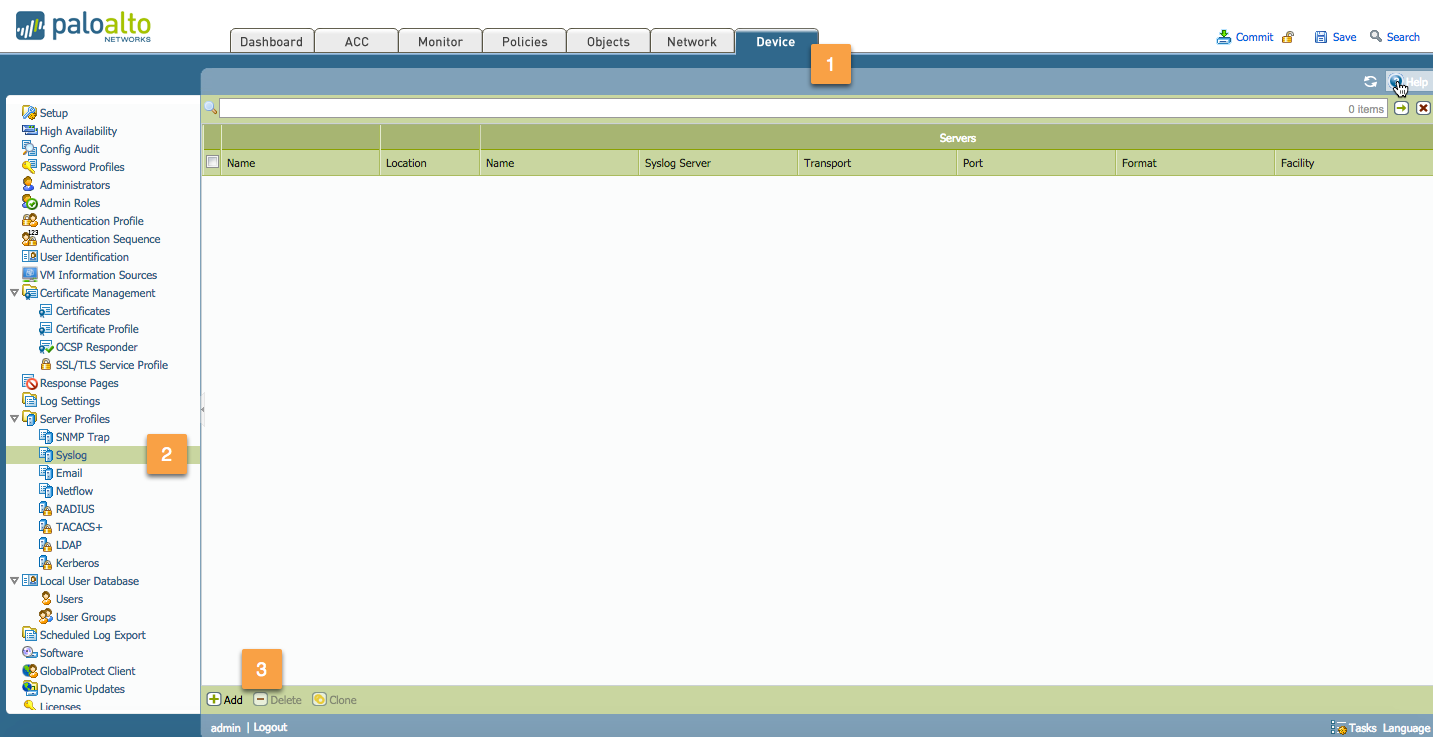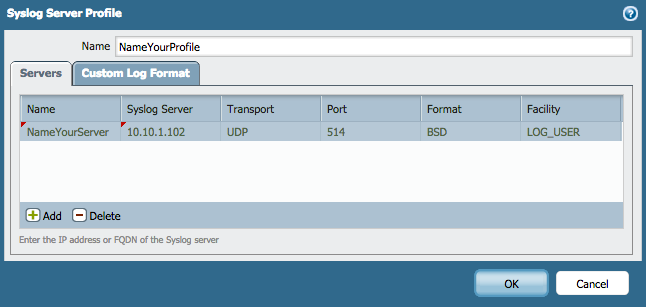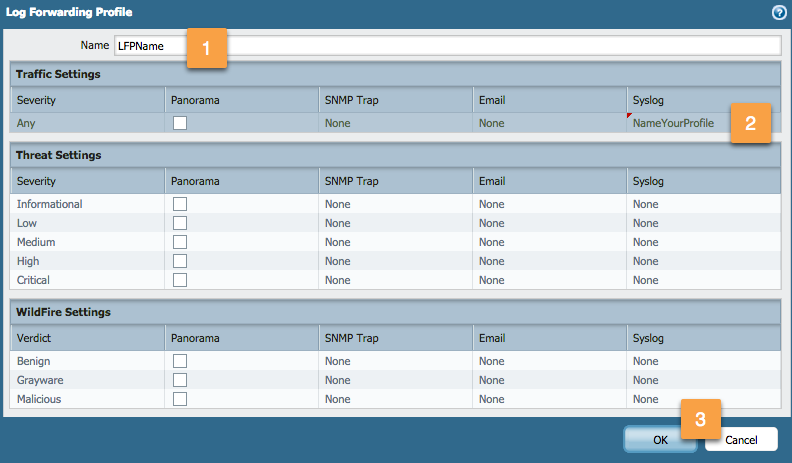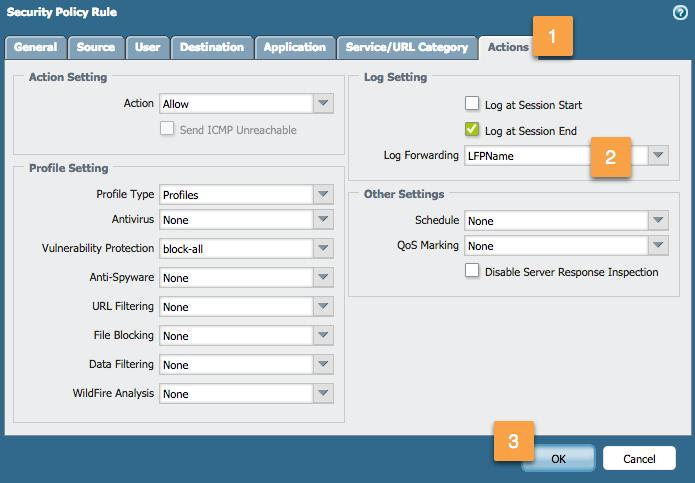Overview:
Need to forward traffic logs from the Palo Alto Networks firewall to a syslog server? For reporting, legal, or practical storage reasons, you may need to get these logs off the firewall onto a syslog server. Follow our step-by-step instructions for success. Forwarding logs to a syslog server involves four major steps:
- Create a syslog server profile.
- Create a log forwarding profile.
- Use the log forwarding profile in your security policy.
- Commit the changes.
Steps of Configuration:
Step 1. Create a syslog server profile
1. Go to Device > Server Profiles > Syslog

2. - Name: Enter a name for the syslog profile (up to31characters). The name is case-sensitive and must be unique.
Use only letters, numbers, spaces, hyphens, and underscores.
3- Location: Enter location.
- Name: Click Add and enter a name for the syslog server (up to 31characters). The name is case-sensitive and
must be unique. Use only letters, numbers, spaces, hyphens, and underscores. - Syslog Server: Enter the IP address of the syslog server. In our case, it will be the CCE ip address.
- Transport: Select whether to transport the syslog messages over UDP, TCP, or SSL. In our case, it will be UDP
- Port: Enter the port number 514 of the syslog server.
- Format: Specify the syslog format to use: BSD.
- Facility: Select Select one of the Syslog standard values. Select the value that maps to how your Syslog server uses the facility field to manage messages. For details on the facility field, seeRFC 3164(BSD format) orRFC 5424(IETF format).

Your syslog server profile will now be created, as shown in the example below:

To facilitate the integration with external log parsing systems, the firewall allows you to customize the log format; it also allows you to add custom Key: Value attribute pairs. Custom formats can be configured under
Device > Server Profiles > Syslog > Syslog Server Profile > Custom Log Format:
 Image Modified
Image Modified
Step 2. Create a log forwarding profile
...
- Name: Enter a profile name (up to 31 characters). This name appears in the list of log forwarding profiles when defining security policies. The name is case-sensitive and must be unique. Use only letters, numbers, spaces, hyphens, and underscores.
- Syslog: Select the syslog server profile to specify additional destinations where the traffic log entries are sent.
- Click 'OK' to confirm your configuration.

Your Log Forwarding Profile is now created, as shown in the following example:
 Image Modified
Image Modified
Step 3. Use the log forwarding profile in your security policy
Go to Policies > Security

Select the rule for which the log forwarding needs to be applied (Any Allow) in the following example:
 Image Modified
Image Modified
Next, go to the Actions tab, select Log Forwarding Profile from the dropdown, and click OK when you are happy with your configuration:
 Image Modified
Image Modified
After clicking OK, you will notice the forwarding icon in the 'Options' column of your security rule:
 Image Modified
Image Modified
Step 4. Don't forget to commit your changes when you're finished.
Repeat the same steps for threat logs like we did for traffic here.
...